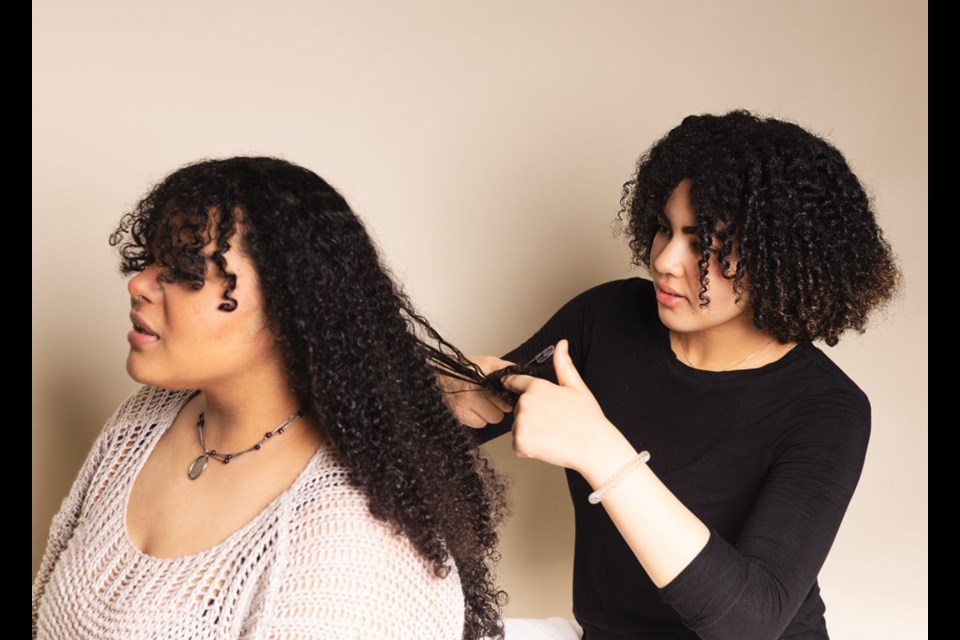When Sarah Lennon arrived at Burnaby Mountain Secondary School halfway through Grade 11 in the middle of the COVID-19 pandemic, she’d been doing school remotely for months.
“In Toronto, we weren’t going to school,” she says. “That was the first time I’d had in-person learning for a really long time.”
So, when she found the school’s Racial Equity Across Cultural Heritages (REACH) Club, the connections she made there were that much more special.
The club, which is made up of about 20 to 25 BIPOC (Black Indigenous People of Colour) students and allies, meets every Thursday at lunch.
Besides just hanging out and having fun, the group talks about issues like racism, homophobia and ableism, according to Lennon.
“Mainly what we talk about weekly on the Thursdays is racist incidents or homophobic incidents that happen across the school, and we come up with solutions, like what we can do? Why is this happening?” she says.
In the hallways, too, members often touch base between classes and support each other, according to Lennon.
“It’s kind of like a unique community to be in,” she says. “We will talk for two minutes and then go to class. And it makes us feel a bit better in that environment.”
The club was revived a few years back by social studies teacher Jyoti Panesar and counsellor Janisha Haywood as a way to carry on the work of a Black student committee started by former vice-principal James Morton.
(Language teacher Itzia Vriend is now also a co-sponsor the club.)
Today, it is a hub of connection and a way for students of colour to make their voices heard.
Take Lennon.
By the time she arrived at Burnaby Mountain, she had experienced her fair share of Black History Months that barely scratched the surface of Black history, let alone her experience as a Black teen living in Toronto and then Burnaby.
“Often it’s maybe one poster about Martin Luther King Jr., but it doesn’t really go beyond that, and I found that quite frustrating because I feel like there’s just so much that you can cover,” she says.
“I thought that there was so much just in my own household, my own community that I see that just isn’t touched on.”
For her final year of high school, she decided to take matters into her own hands – with a little help from her fellow REACH members.
She began planning for Black History Month in December, and, by the time February rolled around, she had a series of displays planned, covering everything from the Black diaspora, which she traced on a world map, to Black hair, which she showcased in a combined photography and poetry project.
Other displays featured Black pioneers from Dr. Dre (for business) to Valerie Thomas (the inventor of 3D movies).
Lennon’s favourite, though, was the display titled Black Hair is Art, a series of photos shot by English language teacher and photographer Anil Sastry of Lennon and three other Black REACH members doing each other’s hair.
“I think it was my favourite because it was so personal,” Lennon says. “We took very personal photos that really showcased what Black hair means to us.”
The displays generated a lot of buzz around the school. Some teachers used them as a resource for class assignments, and lots of students asked Lennon questions about them.
The fact students were educating other students was what made the initiative so successful, according to the 17-year-old.
But Lennon doesn’t want the conversation to stop here or at her school.
“Sometimes I think we restrict it to one month and then we don’t talk about it until the next February, and that doesn’t help when every day stuff is happening,” she says. “I think more conversation in our community is really beneficial.”
One way REACH will keep the conversation going this year is through a racial equity workshop for the school’s professional development day this month.
“Typically professional development is teachers or adults communicating and teaching and learning from one another,” Panesar says. “What we’re doing here is we’re bringing the student voice … These kids are amazing.”
Follow Cornelia Naylor on Twitter @CorNaylor
Email [email protected]



